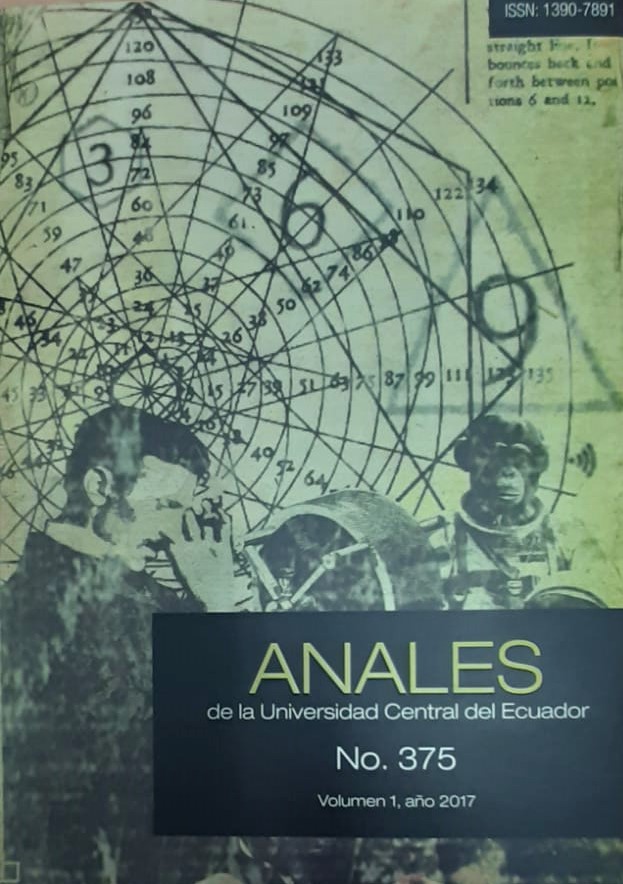Caracterización hidrodinámica del acuífero Pusuquí-San Antonio de Pichincha
DOI:
https://doi.org/10.29166/anales.v1i375.1588Keywords:
Pusuquí-San Antonio aquifer, Hydrodynamic flow, GroundwaterAbstract
The use and exploitation of the Pusuquí-San Antonio de Pichincha aquifer exerts in uence on the recharge and water quality, so it is important to characterize it, taking into account that the volcano-sedimentary aquifers present high complexity due to their geology, anisotropy and heterogeneity. During the last decades, the aquifer of Quito has been studied and monitored continuously, emphasizing mainly in the analysis of a possible hydraulic continuity in the Pusuquí, Pomasqui and San Antonio de Pichincha sectors. e objective of this study was to characterize the behavior and functioning of the Pusuquí-San Antonio de Pichincha aquifer, by recognizing the hydrological, hydrogeological and hydrochemical characteristics dominant in the underground ow. e hydrodynamic characterization physically identi ed the aquifer, and determined the preliminary conceptual model, for which research was used such as: drilling, vertical electric soundings and piezometric and chemical monitoring campaigns, in order to correlate the strata, lithologies and hydraulic properties of the aquifer sector with those determined in the Quito aquifer by Muñoz (2005). Likewise, the water quality analysis was carried out, with the objective of capturing the resource for human and domestic consumption.
References
Andrade, D. (2002). Estudio geovolcanológico del complejo volcánico Pululahua. Proyecto de titulación, Ingeniería en Geología, EPN, 186 pág.
De Miguel, C. (1999). Hidrogeología aplicada. Editorial Félix Varela, 453 pág.
EPMAPS. Unidad ejecutora de proyectos e hidrología. (2003). Registro de caudales del río Monjas-San Antonio.
EPMAPS. (2003). Unidad de Mantenimiento Electromecánico de Distribución.Reporte de mantenimiento de pozos.
Villagómez, D. (2003). Evolución Geológica Plio - cuaternaria del Valle Interandino Central en Ecuador . Proyecto de titulación, Ingeniería en Geología EPN.
EPMAPS. Departamento Acuífero de Quito. (2004). Informe de sondeos mecánicos y eléctricos, sondeo P-1. Pusuquí. vol. 2 de 5.
EPMAPS. Departamento Acuífero de Quito. (2005). Informe de sondeos mecánicos y eléctricos, sondeo Vsap-1. San Antonio de Pichincha.
EPMAPS. Departamento Acuífero de Quito. (2005). Investigaciones de resistividad eléctrica en la exploración de aguas subterráneas. Fotografías aéreas. (1983/02/04). Escala 1:60000, 1:20000, IGM, Instituto Geográfico Militar. Departamento de Fotografía Aérea. Rollo 86.
Martínez, D. (2005). Informe de consultoría. Análisis de la información hidrogeoquímica de los valles de los Chillos, Pifo-El Quinche y Pusuquí-San Antonio de Pichincha. Departamento Acuífero de Quito. EMAAP-Q
Muñoz, T. (2005). Modelación del nivel principal del acuífero de Quito. Proyecto de titulación. Ingeniería en Geología. EPN. 174 pág.
Pourrut, P. (1995). Estudios de geografía: El agua en el Ecuador.
Freeze, R.A., Cherry, J. A. (1979) Groundwater. Englewood Cliffs, Prentice - Hall,p. 604.
Instituto Nacional Ecuatoriano de Normatividad, Ecuador (1998). NTE INEN 2169:98. Norma Técnica Ecuatoriana, Agua: Calidad del agua, muestreo, manejo y conservación de muestras.
Norma Ambiental y de descarga de efuentes (2003). Recurso Agua. Libro VI Anexo 1, publicado en el Registro Oficial del 31 de marzo del 2003.
Thornth waite, 1948 The Water Balance, Publications, In: Climatology, New Jersey: Drexel Institute of Technology, 104 págs.


